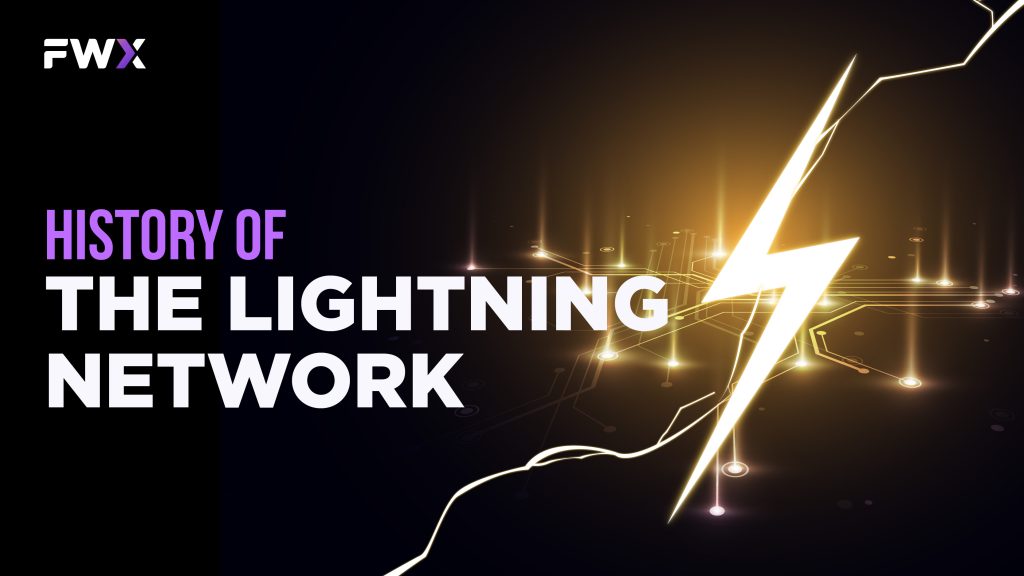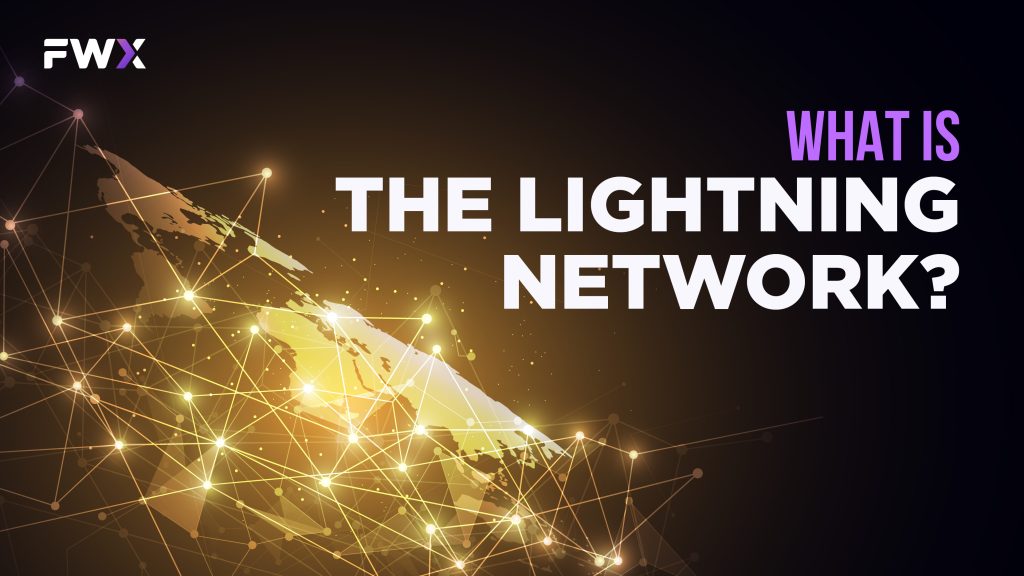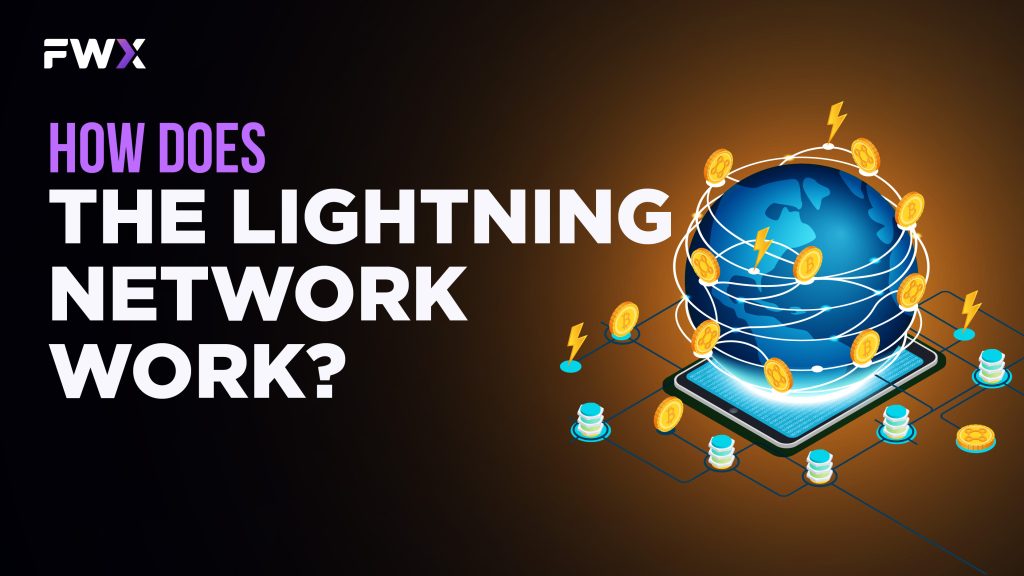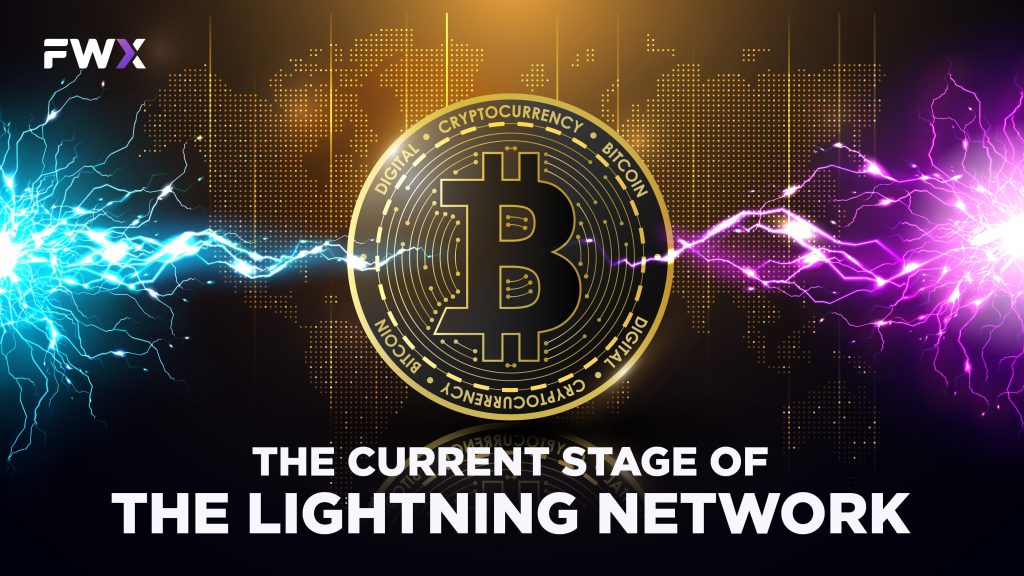Bitcoin, the revolutionary cryptocurrency, has taken the world by storm. But as its popularity has grown, a significant challenge has emerged: scalability. The Bitcoin network can only handle a limited number of transactions per second, leading to slow confirmation times and high fees. This bottleneck threatens to hinder Bitcoin’s potential as a global payment system.
Enter the Lightning Network, a game-changing innovation designed to address the scalability issue and propel Bitcoin into the future of digital payments.
Limitations of the Bitcoin network

While Bitcoin revolutionized the digital currency landscape, its limitations have become increasingly apparent as its adoption grows. These limitations, primarily centered around scalability and transaction efficiency, pose significant challenges to its long-term success as a mainstream payment system. Here’s a closer look at the key problems the Lightning Network aims to address:
1. Slow Transaction Times:
- The Bitcoin network can only handle around 7 transactions per second (TPS). This pales in comparison to traditional payment systems like Visa (thousands of TPS).
- Confirmation times can take anywhere from 10 minutes to an hour, making Bitcoin unsuitable for everyday purchases requiring immediate settlement.
2. High Transaction Fees:
- As network congestion increases, miners demand higher fees to prioritize transactions. This can make small transactions prohibitively expensive.
- Fee volatility and unpredictable confirmation times further disincentivize small-value transactions.
3. Limited Scalability:
- The Bitcoin network’s design limits its transaction capacity due to the 10-minute block time and 1MB block size.
- This inherent limitation hinders its ability to handle the volume of transactions required for widespread adoption.
4. Energy Consumption:
- Bitcoin mining relies on a Proof-of-Work (PoW) consensus mechanism, known for its high energy consumption. This raises environmental concerns and limits its appeal to sustainability-conscious users.
5. Security Vulnerabilities:
- While generally secure, the Bitcoin network is not immune to potential vulnerabilities, such as 51% attacks or double-spending attempts.
- These vulnerabilities can disrupt the network and raise security concerns for users.
6. Lack of Merchant Adoption:
- Widespread merchant adoption of Bitcoin is still limited due to the aforementioned limitations and technical complexities.
- This lack of acceptance further hinders its potential as a day-to-day payment method.
7. Regulatory Uncertainty:
- The regulatory landscape surrounding Bitcoin and cryptocurrencies remains unclear in many jurisdictions, creating uncertainty for businesses and users.
- This lack of clarity can discourage wider adoption and hinder its integration into traditional financial systems.
In conclusion, the Bitcoin network’s limitations, particularly around scalability, transaction efficiency, and environmental impact, pose significant challenges to its long-term success. The Lightning Network emerges as a promising solution, aiming to address these bottlenecks and pave the way for Bitcoin’s broader adoption as a global payment system.
History of the Lightning Network

Enter the Lightning Network, a revolutionary innovation akin to building a network of side roads to alleviate the congestion on the main highway. But this side road network wasn’t built overnight; it has a fascinating history of its own.
2015: Seeds of an Idea
The year 2015 marks the genesis of the Lightning Network concept. Joseph Poon and Thaddeus Dryja, two brilliant minds in the Bitcoin community, published a white paper titled “The Bitcoin Lightning Network: Scalable Off-Chain Instant Payments.” This paper outlined the fundamental principles of payment channels, the cornerstone of the Lightning Network.
2016-2017: Taking Shape
Following the white paper’s release, development efforts ramped up. Developers around the world started building implementations of the Lightning Network protocol, with projects like c-lightning and lnd emerging as frontrunners. These early implementations focused on core functionality and laying the groundwork for future growth.
2018-2019: Early Adopter Phase
As the technology matured, pilot programs and early adopter initiatives began. Lightning-enabled wallets and payment processors allowed users to experience the network’s speed and efficiency firsthand. Some notable examples include the launch of the Lightning Torch, a collaborative experiment that saw 1 million satoshis (a unit of Bitcoin) sent around the world through the Lightning Network.
2020-Present: Growth and Expansion
The past few years have witnessed significant growth in the Lightning Network ecosystem. The network’s capacity has exploded, surpassing 50,000 Bitcoin locked in channels. More businesses and services are integrating Lightning payments, offering users a faster and cheaper alternative to traditional Bitcoin transactions. El Salvador’s adoption of Bitcoin as legal tender, with Lightning playing a key role in remittances, further propelled the network into the spotlight.
What is the Lightning Network?

The Lightning Network is a second-layer scaling solution for blockchain-based cryptocurrencies, with Bitcoin being the most notable one. It aims to address the scalability issues and high transaction fees associated with these blockchains by enabling faster and more cost-effective transactions off-chain.
The primary idea behind the Lightning Network is to create a network of payment channels that operate off the main blockchain. These channels allow users to make rapid and low-cost transactions directly with each other, without the need for every transaction to be recorded on the main blockchain.
How does the Lightning Network work?

Here’s a basic overview of how the Lightning Network works:
- Opening Channels: Two parties create a payment channel by depositing a certain amount of cryptocurrency into a multi-signature wallet on the blockchain. This initial transaction is recorded on the blockchain.
- Off-Chain Transactions: Once the payment channel is open, the two parties can transact with each other off-chain by updating the distribution of funds between them. These updates are not recorded on the blockchain for each transaction, making them faster and cheaper.
- Routing through Network: The Lightning Network is a network of interconnected payment channels. If two users don’t have a direct channel between them, the network can find a route through other channels to facilitate the transaction. Each hop in the route updates the channel balance accordingly.
- Closing Channels: The final channel balance is recorded on the blockchain when either party decides to close the channel. This closing transaction reflects the net result of all transactions that occurred within the channel.
What Is a Lightning Payment Channel?
A Lightning payment channel is a mechanism within the Lightning Network that enables users to transact off-chain, quickly and with minimal fees, by creating a direct connection between them. These channels are essentially agreements between parties to conduct a series of transactions without recording each one on the underlying blockchain (such as the Bitcoin blockchain). Payment channels are a fundamental building block of the Lightning Network, contributing to its scalability and efficiency.
Routing Payments Over Lightning
Routing payments over the Lightning Network involves finding a path through the network of payment channels to facilitate a transaction between two users who may not have a direct channel between them. The Lightning Network, being a network of interconnected payment channels, allows for these off-chain transactions to be routed efficiently.
How Does Lightning Routing Work?
- Network of Payment Channels: The Lightning Network is a mesh of payment channels connecting various users. Each channel has a certain capacity, representing the maximum amount that can be transmitted through that channel.
- Finding a Route: Suppose Alice wants to send cryptocurrency to Dave, but they don’t have a direct payment channel. The Lightning Network software will attempt to find a route through intermediary nodes. These nodes are participants in the network with open payment channels.
- Routing Algorithm: Routing algorithms are employed to discover the most efficient path for the transaction. The goal is to find a route with enough capacity to accommodate the desired payment amount. The algorithm considers factors like channel capacity, fees, and the reliability of the nodes in the route.
- On-the-Fly Channel Updates: If there is no direct channel between Alice and Dave, the Lightning Network can dynamically adjust channel balances during the routing process. This involves updating the channel balances of intermediary nodes in real-time to reflect the transaction flow.
- Multi-Hop Transactions: The payment is split into smaller increments as it traverses the network through multiple payment channels. Each hop in the route is essentially a micro-transaction within the Lightning Network.
- Atomicity and Hashed Time-Locked Contracts (HTLCs): To ensure the security and atomicity of the transaction, the Lightning Network uses a mechanism called Hashed Time-Locked Contracts (HTLCs). These smart contracts ensure that either the entire payment is completed or none of it is.
- Settlement: Once the payment reaches the destination (Dave, in this example), the final state of the payment channels is updated, and the transaction is considered settled. The payment is now reflected in the channel balances of the nodes involved.
Advantages and Disadvantages of Lightning Network

The Lightning Network offers several advantages as a scaling solution for blockchain-based cryptocurrencies, but it also comes with certain challenges and potential drawbacks. Here’s a breakdown of the advantages and disadvantages of the Lightning Network:
Advantages:
Scalability:
- Reduction in On-Chain Transactions: Lightning Network enables off-chain transactions, reducing the congestion on the main blockchain and increasing the overall scalability of the network.
- Increased Transaction Throughput: With Lightning, the network can potentially handle a significantly larger number of transactions per second compared to traditional on-chain transactions.
Low Transaction Fees:
- Microtransactions: Lightning Network allows for microtransactions that are economically unfeasible on the main blockchain due to high transaction fees. This makes it suitable for everyday, small-value transactions.
Instant Transactions:
- Near-Instant Settlement: Payments on the Lightning Network can be settled within seconds, offering a much faster alternative to the potentially slower confirmation times on the main blockchain.
Bidirectional Payment Channels:
- Flexible Transactions: Users can send and receive funds bidirectionally within payment channels, making it convenient for ongoing and dynamic transactions between parties.
Network Privacy:
- Reduced On-Chain Footprint: Since most transactions occur off-chain, there is a reduced on-chain footprint, contributing to enhanced privacy for users.
Cross-Chain Compatibility:
- Potential for Cross-Chain Transactions: While primarily associated with Bitcoin, the Lightning Network concept can be applied to other blockchains, potentially enabling cross-chain transactions.
Disadvantages:
Channel Liquidity Management:
- Need for Liquidity: Users must have sufficient liquidity in their payment channels to route transactions. This requires actively managing channel balances.
Routing Challenges:
- Routing Complexity: Finding an optimal route for a transaction through the network can be complex, and failures can occur, leading to routing issues.
Centralization Concerns:
- Node Centralization: Large nodes with high liquidity may emerge, leading to concerns about centralization. However, ongoing development aims to address this issue.
Security Concerns:
- Need for Watchtowers: To prevent fraudulent channel closures, users may need to rely on watchtowers—third-party services that monitor the blockchain for potential fraud.
User Experience:
- Wallet Integration: Lightning Network requires wallet integration, and not all wallets support it. The user experience can vary, and it may not be as seamless as traditional on-chain transactions for all users.
Limited Adoption:
- Adoption Challenges: While adoption has been growing, the Lightning Network is not yet universally adopted, and not all users or merchants accept Lightning payments.
Potential for Network Fragmentation:
- Interoperability Challenges: Different implementations of the Lightning Network may lead to interoperability challenges, potentially resulting in network fragmentation.
The current stage of the Lightning Network

Here’s a snapshot of the current landscape:
Growth:
- User & Channel Boom: The network has witnessed a surge in users and channels, indicating rising interest and utilization. Active users crossed 18 million in October 2023, while the number of channels surpassed 15 million.
- Capacity on the Rise: The total amount of Bitcoin locked in the Lightning Network, known as its capacity, has steadily increased. As of December 25, 2023, it stands at over 5,400 BTC, showcasing growing trust and locked-in value.
- Adoption Across Sectors: Businesses are increasingly embracing Lightning for micropayments and faster settlements. El Salvador, for instance, has integrated it into its national Bitcoin infrastructure.
Challenges:
- Complexity for Newcomers: Setting up and using Lightning can be daunting for new users, especially compared to traditional Bitcoin transactions. User interfaces and educational resources need further refinement.
- Liquidity Distribution: The current distribution of liquidity within the network can be uneven, making it harder for some users to find suitable channels for their transactions.
- Security Concerns: While generally secure, the Lightning Network is still under development, and potential vulnerabilities could be exploited. Ongoing research and development are crucial to mitigate these risks.
The future of the Lightning Network

Predicting the future with absolute certainty is impossible, but when it comes to the Lightning Network, there are some exciting possibilities and challenges on the horizon:
Positive Future Potential:
- Mainstream Adoption: With increasing user-friendliness, improved liquidity, and growing awareness, the Lightning Network could become the go-to platform for everyday micropayments and small transactions in Bitcoin. This could pave the way for broader Bitcoin adoption as a digital cash system.
- Enhanced Scalability: As technology advances and solutions for channel balancing and transaction size limitations are developed, the network’s capacity for handling a high volume of transactions could significantly increase, overcoming Bitcoin’s on-chain scalability limitations.
- Innovation and Integration: New applications and services beyond simple payments are being built on top of the Lightning Network, like instant micro-lending, decentralized exchanges, and subscription models. This diversification could further boost its usage and utility.
- Offline Transactions: While still under development, the ability to conduct Lightning transactions without an active internet connection could be a game-changer, especially in areas with limited connectivity, increasing financial inclusion and accessibility.
Potential Challenges:
- User Experience: Despite improvements, using the Lightning Network can still be technically demanding for average users. Simplifying user interfaces and wallet functionality is crucial for broader adoption.
- Liquidity and Routing: Ensuring sufficient liquidity and efficient routing across the network remains a challenge. Solutions like automated channel management and improved pathfinding algorithms are needed for smoother transactions.
- Centralization Risks: If custodial solutions or centralized hubs become dominant, it could compromise the network’s core principles of decentralization and censorship resistance. Maintaining a healthy balance between convenience and decentralization is key.
- Security Vulnerabilities: Like any new technology, the Lightning Network is still susceptible to potential security vulnerabilities. Continuous research and development are necessary to identify and address these risks.
Ultimately, the future of the Lightning Network will depend on its ability to overcome these challenges and continue innovating. If it can deliver on its promise of fast, cheap, and secure Bitcoin transactions, it has the potential to revolutionize the way we use digital currency and usher in a new era of financial technology.
In conclusion, the Lightning Network stands at a fascinating juncture. It’s rapidly growing, witnessing increasing adoption, and brimming with potential to revolutionize Bitcoin transactions. However, challenges like user complexity, liquidity distribution, and security concerns remain to be addressed. The road ahead involves simplifying user interfaces, fostering interoperability, and developing innovative applications to fully unlock its potential. While still in its early stages, the Lightning Network’s progress towards faster, cheaper, and more efficient Bitcoin transactions is promising, holding immense potential for the future of Bitcoin and the wider cryptocurrency ecosystem.


